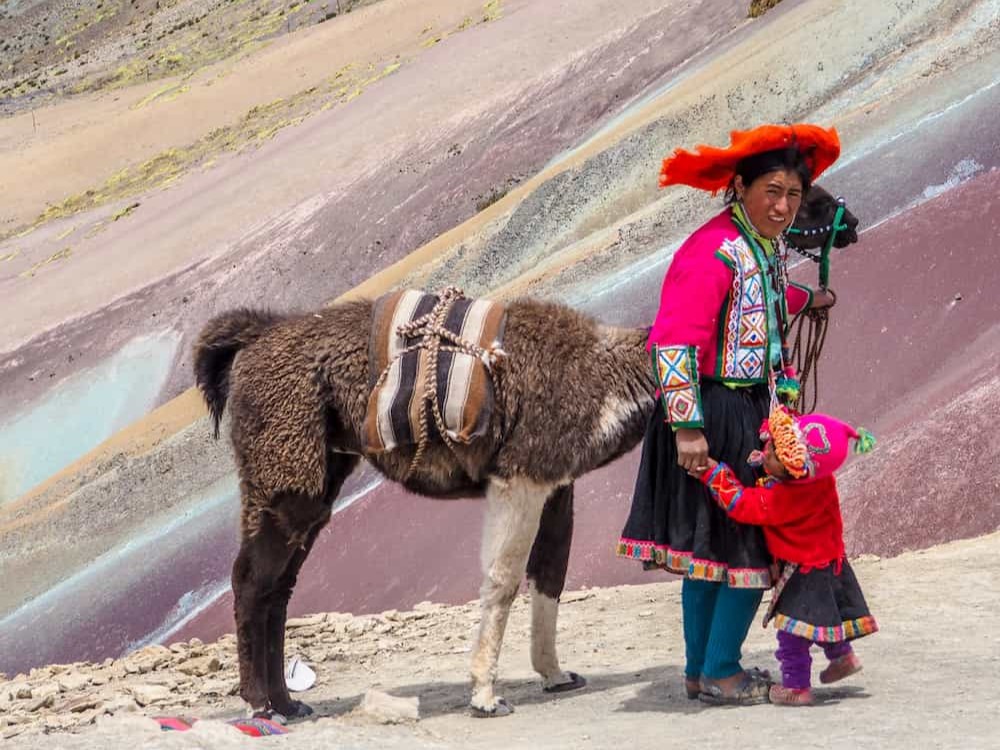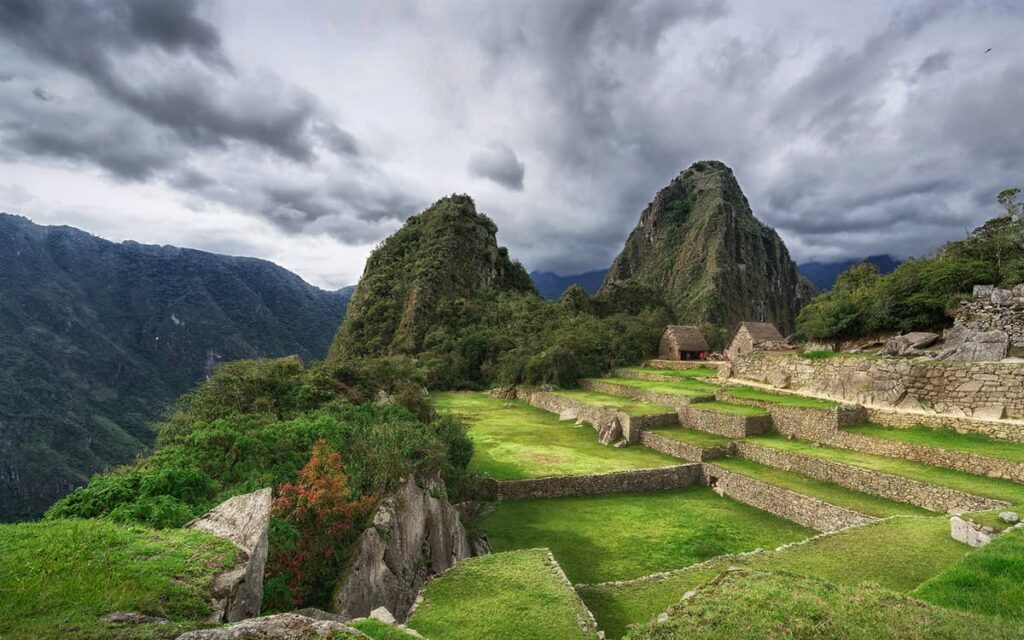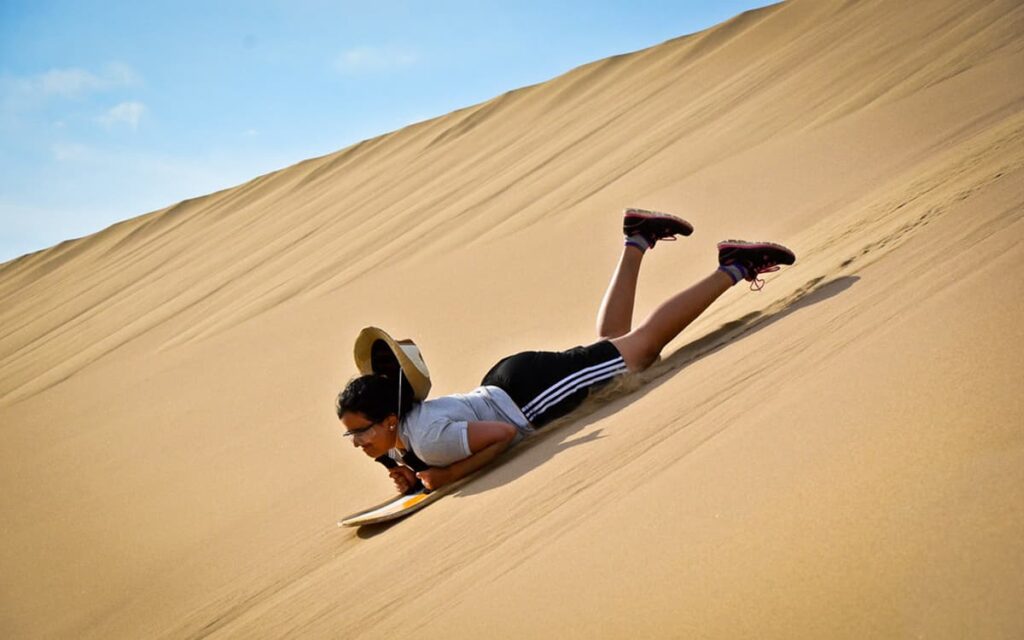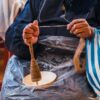Ceviche is a typical dish of Peruvian cuisine and has been so successful that its flavors have spread to other Latin American countries. There are many versions of ceviche and it is impossible to say that only one is the correct one, but this time we will share with you a Peruvian ceviche recipe that tries to rescue everything traditional from the delicious original ceviche of Peru.
Many enjoy the ceviche or ceviche alone, but you can also accompany it with rich garnishes. In this case, we have used sweet potato, baby corn and some lettuce leaves to refresh. We invite you to try it and discover how to make Peruvian ceviche in an easy and accessible way for all levels.
Ceviche, which is often spelled ceviche or cebiche, depending on which part of South America it comes from, is basically raw fish and seafood marinated in citrus juice, primarily lemon juice. The citrus in the juice coagulates the protein in the fish, effectively cooking it, thus not heating it, and it is served cold or at room temperature.
Many fish and shellfish are used to prepare it. The most popular fish used to prepare ceviche are Pargo, Corvina, Grouper and Dorado. Other ingredients in seafood are prawns, shells, squid, and octopus.
It can be eaten as a starter or as a main course, depending on how it is served. It seems that there are as many varieties of ceviche as the people who eat it.
Where does it come from?
Ceviche may have originated among the Moche, a coastal civilization that began to flourish in the area that is now northern Peru nearly 2000 years ago. The Moche apparently used the fermented juice of the banana-passion fruit. Recent research also shows, during the Inca Empire, that fish were marinated with chicha, an Andean fermented drink.
Different chronicles also report that along the Peruvian coast before the arrival of the Europeans, fish was consumed with salt and «chili». On the other hand, this theory proposes that the natives simply switched for the citrus fruits brought by the Spanish colonizers, but the main concepts of the dish remain essentially the same.
Historical review
The ceviche or cebiche is a recipe originally from Peru, it consists of fish and other seafood cooked in a lemon or lime juice.
Ceviche or ceviche is a recipe native to Peru, it consists of fish and other seafood cooked or marinated in a lemon or lime juice.
The origin of Cebiche lies in the gastronomy of the indigenous peoples of the coasts of South America, in Peruvian areas such as Trujillo, Chiclayo, Piura and Lima.
According to historians, the ceviche would have its origin in the Moche culture more than two thousand years ago. But these cannot yet define the true origin of this dish although it is said to be authentic and genuine from Peru.
Curiosities about the Peruvian Ceviche
- The origin of the word Ceviche comes from the Quechua word «Siwichi», which means fresh fish.
- In Peru, Ceviche is a Cultural Heritage of the Nation. 65% of Peruvians assure that this dish is the most representative of their gastronomy.
- The Peruvian government decreed in 2008 that in each celebration of Independence, the National Ceviche Day be celebrated.
- At first, the authors of this dish used orange juice for its preparation. Then the recipe evolved and today it is common to use lemon juice.
Touring Peru is discovering endless mysterious places, with hidden stories in corners that you may have never seen before stepping on this country. We recommend you to visit another impressive destinations in Cusco like the tour to rainbow mountain peru or the humantay lake tour from cusco, which only takes one day. But if you are gonna to stay more days in Perú, other archaeological places you can know will be the choquequirao trek peru, the salkantay trek to machu picchu, and the classic inca trail 4 days 3 nights.
Peruvian Ceviche Recipe
It is worth mentioning that the best known version of ceviche or cebiche is the Peruvian Peruvian Ceviche recipe, it also has its own version in other parts of Latin America, such as the also known Ecuadorian ceviche, but the truth is that its origin is in Peru.
Ingredients for Ceviche:
- 2 kilos of perch (or any fresh white fish with wide loin. Always keep it cold, important)
- 2 large red onions (sliced ??very finely)
- 1 piece of kion / ginger whole and peeled (the size of a dice)
- 2 ají limos (finely chopped without seeds. Reserve a slice)
- 2 tablespoons finely chopped cilantro
- 20-30 Peruvian lemons (if there is no Peruvian lemon alternate with yellow lemon and limes, 7 yellow and 14 limes)
- Ice
- Salt
- Pepper.
- Garrison
- 2 sweet potatoes / sweet potatoes / sweet potatoes cooked in water with a tablespoon of brown sugar
- 2 corn (coarse grain corn) cooked in water with a tablespoon of brown sugar
Canchita Serrana: buy mote corn (in any Latin store where you can also find corn and chili) and fry it in a pot with plenty of oil, as if it were popcorn. Add salt.
Peruvian Ceviche recipe
Cut the lemons in half and have them ready to squeeze. Cut the fish into 1 and 1/2 cm pieces. with a good fish knife and sharp so as not to mistreat it.
Place it in a glass bowl along with the onion. Wash twice in very cold water and without being mistreated. Rub the surface of a glass bowl with the piece of ginger (kion) and the whole chili pepper slice, all over the bowl where the ceviche is to be prepared. Leave both pieces in the bowl.
Add the fish and onion. Add ice, approximately six cubes soaked in water so that they do not stick to the fish. Add salt, pepper and the chopped ají limo. Squeeze the lemons by hand on the preparation, avoiding the seeds from falling and squeezing them only halfway, gently and by hand so that they do not become bitter.
Go stirring and continue squeezing. This will last about 2 to 5 minutes (it will depend on the lemon). When you see that the fish begins to take color, taste the flavor and add salt if necessary.
Add the coriander. Remove the whole chili pepper and the piece of ginger.
There is no single way to prepare ceviche. The original recipe for Peruvian ceviche can vary in ingredients depending on the region where it is prepared. However, all good ceviche must have a good quality fish and be marinated in coriander, chili and lemon.
In case you want to learn how to prepare ceviche, you can start using fish such as sea bass, sea bass, hake or monkfish. You can also vary the garnishes and accompany your plate with some delicious green plantain chips or toasted corn like the one we have used in this recipe for tilapia ceviche with toasted corn.
The seven secrets to making a good ceviche at home
Always use very fresh fish
Ceviche is a cooking technique that basically consists of cooking the fish with the acids of the lime, so similarly to other preparations in which the fish is not cooked at temperature, it is very important that the fish is very fresh. Today, health reasons make it best to previously freeze the fish with which the ceviche is to be prepared, just like when making sushi.
Use Peruvian chili to spice up the ceviche
There are many kinds of peppers, the ají limo, the aji panca, the ají rocotó and many others. For a not overly spicy ceviche, ají amarillo is a good option, as well as ají limo. If you are looking for strong emotions, you can use hot pepper or other varieties of hot peppers.
As it is not always easy to find Peruvian chili peppers, you can replace them with red chillies, which are not very hot. Remember that what gives more heat are the «veins» and the seeds of the chili pepper, which we recommend removing before adding it to the fish. In any case, a small portion of chili is enough to «brighten up» the ceviche. Wear gloves when handling the peppers to avoid irritating your eyes and mucous membranes after touching them.
Don’t squeeze the limes. Use only three quarters
Both the white area of ??the lime or lemon -the albedo- and the essential oils of the peel can be bitter, so the chef recommended us not to squeeze the limes but to squeeze them slightly to get their juice. Although an important part is wasted, to make a good ceviche it is preferable to cut the lime into quarters and squeeze, removing three-quarters of the juice, discarding the rest.
Cut the fish into 1.5 cm cubes
The fundamental difference between ceviche and tiraditos is in the cut of fish that is used. While in tiraditos the fish is cut into small strips or fillets, in ceviche the cut is usually used in tacos or dice. A side size of approximately 1.5 cm is ideal for cutting the fish, once thawed and ready to use. The best fish for ceviche are those with white and brown meats, especially corvina.
Tiger milk
After seasoning the fish with salt and adding the minced chili, coriander and red onion, add the lemon juice to cook the fish with the citric acid. After leaving the fish for a while and stirring from time to time, the liquid -which has all the mixture of flavors- is called tiger milk.
The name seems to derive from its whitish color -milk- and its potency -as attributed to the animal- or according to other versions, because its consumption excites the libido. Long ago, the custom was to leave the fish marinating in that tiger milk for a long time, even a few hours or overnight, inside the refrigerator.
Leche de tigre can be prepared – lime juice, chili pepper, onion – and stored ready to use. Depending on the type of pepper used, you can get a yellowish or whitish tiger’s milk. This is how you can see it in the photo above this paragraph in an octopus, squid and sea bass ceviche with yellow tiger milk.
Always accompany the ceviche with other products
The classic accompaniments to fish are cooked corn or corn, roasted corn or cancha, cooked sweet potato or sweet potato and cooked yucca. So it is perfect because in the mouth they will combine the different textures and the sweet flavors of the sweet potato, salty of the crunchy corn, acid of the tiger milk and the whole will be harmonious.
Try making ceviches with other fish and seafood
As we have already tried in Directo al Paladar with hake ceviche, prawns and mandarin juice, ceviches can be made with other fish and seafood such as prawns, squid, octopus and different varieties of fish with white and smooth meats. It’s a matter of imagination and trying which ones we like best.












